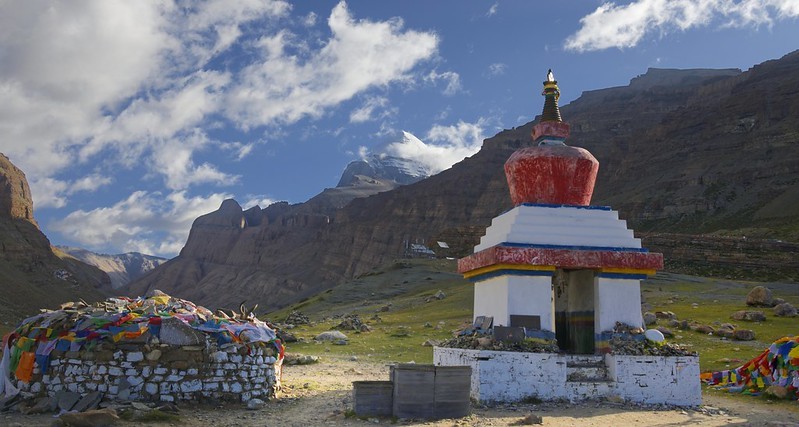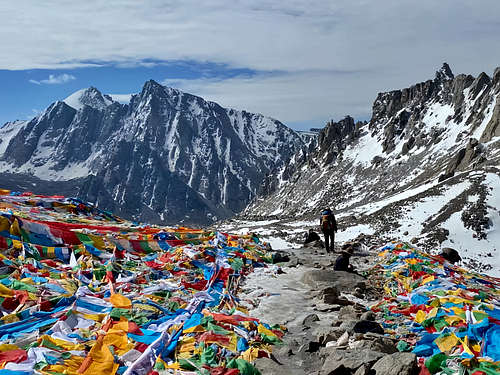Kailash Mansarovar Yatra: Once in A Lifetime Experience
Kailash Mansarovar is a pilgrimage site nestled in the Himalayas in Tibet. Over the years, Yatris across the world come here to do the Kailash Mansarovar Yatra, and travelers come to witness its mystical beauty. In this article, you will find the routes, cost, best time and etc. to undertake the Kailash Mansarovar Yatra.
Kailash Mansarovar trek means mainly doing a parikrama of Mount Kailash and taking a holy baptism in Mansarovar Lake. It is said that these can alleviate any sins of the pilgrims and bring them salvation.
People who are between 18 and 70 years old and in good health are eligible to take the Kailash Mansarovar Yatra trip. The yatra can be done on foot, by bus, or by helicopter. To undertake the yatra, please book either through the Ministry of External Affairs or through a Tibet/Nepal tour operator.
How to Take a Kailash Mansarovar Yatra?
To reach Kailash Mansarovar, Indian pilgrims can take a road trip from Dehli. The Ministry of External Affairs organizes the yatra from June to September each year through two different routes -- Lipulekh Pass (Uttarakhand) and Nathu La Pass (Sikkim). The yatra is conducted in batches with a certain number of pilgrims each year. Alternatively, you can go to Kathmandu to join the Kailash Mansarovar pilgrimage trip starting here. If you have a US passport or other passport, you can fly to Lhasa to start your Kailash Mansarovar trip.
- Via Lipulekh Pass
The route through Lipulekh Pass (a Himalayan pass on the border between India's Uttarakhand state and the Tibet region of China) involves some trekking. The Kailash Mansarovar Yatra cost is about Rs 1.6 lakh per person/USD2133, which is the lowest cost. The duration of the Kailash Mansarovar Yatra is 24 days, including 3 days of preparation in Delhi.
The route has three sections. The first section is a 107.6 km long road from Pithoragarh to Tawaghat, the second section is a 19.5 km single-lane road from Tawaghat to Ghatiabgarh, and the third section is 80 km from Ghatiabgarh to Lipingkh Pass at the Chinese border. Only trek through. A new road in the third section is under construction in 2020 to allow vehicles. After completion, it cuts travel time from 5 days by trek to just two days by vehicle.
This route crosses important locations, such as Narayan Ashram. Yatris can also see the beauty of the scenery of the Chialekh Valley or "Om Parvat", where snow naturally appears in the form of "Om".
- Via Nathu La Pass
The route through Nathu La Pass (4,309 meters, connecting Sikkim India with China's Tibet Autonomous Region) is reachable by bus and especially suitable for elderly yatris. The cost is about Rs.2 lakh per person/USD2,667. The duration would be 21 days including 3 days in Delhi for preparatory work. It passes through scenic spots such as Hangu Lake and the vast landscape of the Tibetan Plateau.
- Via Kathmandu
A Kailash Mansarovar Yatra from Kathmandu is applicable either by helicopter or by car. The helicopter package is easier and faster, which takes 12 days and costs RS 210,000/USD2,800 per person. You will be flying from Kathmandu to Simikot via Nepalgunj and take a helicopter ride from Simikot to Hilsa. The view over the Himalayan mountains is breathtaking and wonderful. After entering Tibet we will drive you to Kailash and Mansarovar.
The overland package takes 14 days and costs RS140,000/ USD1,950 per person. After sightseeing in Kathmandu, you will pass Syabrubesi, and drive to Saga via Kerung. Then, explore the area of Mansarovar and drive to Darchen for the Kailash Mansarovar Yatra. The Himalayas will leave a deep impression on you along the way.
- Via Lhasa
Apart from these religious groups, plenty of tourists are simply enchanted by the beauty of the place. They can book Kailash Mansarovar tour packages operated by Tibet travel agencies directly. But the premise is to have non-Indian passports cos Tibet Travel Agencies are not allowed to arrange Indian tourists to Kailash Mansarovar. The duration is 12 ~15 days. Kailash Mansarovar tour cost via Great Tibet Tour starts from Rs 140,219/ USD1,930 per person. Along the way, you can visit the Potala Palace, Yamdroktso Lake, Everest Base Camp, and view the sand dunes, beautiful grassland, and local's villages, etc.
Extra Expenses During the Trip
Throughout the trip, you will have to pay for services that are not covered by your travel agency. These expenses are personal, and thus it is entirely dependent on you to spend or not. Moreover, there may be incidents like natural disasters and emergency medical situations, which cannot be covered by any travel agency.
Nevertheless, it is always wise to carry extra cash wherever you go. Some of the excluded personal expenses are:
- Horse rides or yak rides. This is for people who cannot walk long miles at a stretch. USD50/day
- Laundry, extra snacks and drinks, telephone services, etc. USD50/day
- Extended hotel stays if you are sick. USD65/room/night.
- Airport transportation costs. USD80/vehicle
How to Take Kailash Parvat Trek?
For pilgrims, Mount Kailash yatra can be divided into external kora and internal kora. The inner kora trek is shorter but more dangerous and difficult to accomplish it. And the local people believe that people are not qualified to take an inner kora until they accomplish 13 circles of the outer kora. Therefore, there are few people to take the inner kora, and it is not recommended to do so.
The outer kora is 52 kilometers long, and the total ascend is 1,000m+. Kailash Parvat trek belongs to high-altitude trekking and is physically demanding, usually taking 3 days.
Day 1: You can take an eco-bus from Darchen to Prayer Flag Square for 5 kilometers, and then you will trek for 20 kilometers. It is mostly uphill, taking about 6 hours to reach Dirapuk Monastery at a constant speed.
Day 2: This is the most challenging part of the trek as you will challenge the Dolma La Pass (5,630m). During this time you need to be very careful about the drastic ascent and descent of almost 600 meters. You will trek 22 km to Dzultripuk Monastery, which takes around 11 to 14 hours.
Day 3: There are only 12 kilometers of gentle roads left, which is relatively easy. And you can take the bus for the last 3 kilometers.
What Is The Ideal Time For Mount Kailash Yatra?
The Tibetan mountains have unpredictable and irregular snowfall. The limited supply of oxygen, cold temperatures, and rough terrain make it all the more difficult to visit this place. That's why to enjoy the entire trip; it is important to choose a particular time to go on this Yatra.
The ideal time for a Kailash Mansarovar Yatra would be from April to June or from September to October. April-June is the spring period, so you will be able to witness clear blue skies, lush greenery and stunningly beautiful views. The weather will be pleasant on most days, and there are also high chances of rain.
September to October is the autumn, during which the oxygen content is higher than the rest of the year and the temperature is suitable. Therefore, the possibility of altitude sickness is less than usual, especially at such a high altitude place, on the kora trail from 4,700 meters to more than 5,700 meters above sea level.

Autumn is an ideal time for Kailash yatra. On an average day, the temperature reaches as high as 14°C and as low as -12°C. During the summer period, it varies around 16°C-21°C. During the winter period, it varies from around 0°C to -4°C. The average difference between the day and night temperature is around 14°C. The nights are much colder than the day.
In recent years, Yatris go Kailash parvat from June to September cos they can only get their pilgrimage permits for this period. Although summer is the monsoon season, it usually rains at night so the weather will not affect the yatra too much.
How To Deal With High Altitude Sickness?
Mount Kailash is located 6,700 meters above sea level. When one goes for Kailash Mansarovar Yatra, he may experience high altitude sickness. This sickness is caused due to lower rates of oxygen at high altitudes.
Your body is used to working at certain amounts of oxygen. Therefore, the lack of oxygen supply can cause you physical distress.
Common symptoms of high-altitude sickness are:
- Vomiting and nausea
- Appetite loss
- Severe headaches
- Fatigue
- Dizziness
- Breath loss
- Laziness
If you experience any of the above symptoms during the Kailash Mansarovar Yatra, you likely have high altitude sickness. To make yourself feel better you can do the following things.
- Hydrate regularly
- Don't trek for straight long hours
- Avoid exercise
- Don't drink alcohol
- Eat fiber-rich foods
- Carry portable oxygen cylinders
External Links
Add External Links text here.

